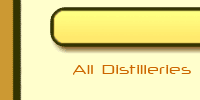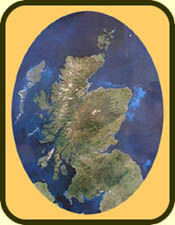Banff Scotch Whisky
Banff (Pronounced: banf or bampf)
Speyside (Deveron)
57°40'6.66"N, 2°33'25.99"W
MacDuff (Glen Deveron), Glenglassaugh, Knockdhu
1863
Closed (1983; demolished)
Springs on Fiskaidly farm
Unknown
None - the distillery was demolished
Diageo > DCL (since 1892)
Inverboyndie, Banff, Banffshire, AB45 2JJ, Scotland
-
No
No
No
Below, on WhiskyFun and on the Malt Maniacs Monitor
Name:
Region:
GPS location:
Neighbours:
Founded:
Status:
Water source:
Equipment:
Production capacity:
Ownership:
Address:
Telephone number:
Visitor centre:
Website:
Official bottlings:
Scores & tasting notes:

Banff distillery still used triple distillation
at the time, and they would
continue to do so until 1924. Shortly before the turn of the century
(the turn between the 19th and 20th century, that is) Banff managed
to produce almost one million litres of alcohol per year - which is more
than some small distilleries like Arran, Oban, Edradour, Springbank
or Benromach produce these days. However, they did so with six
stills' - which is much more than most of its modern counterparts.
The Simpson family
kept full control over the company until 1921,
when they sold a large part of the distillery to the 'Mile End Distillery
Company' from London (a subsidiary of the brewing company 'Taylor
Walker & Co. Ltd.'). The involvement of the Simpson family and Mile
End with the Banff distillery ended altogether in 1932 when SMD
a.k.a. the 'Scottish Malt Distillers Ltd.') bought Banff for £50.000,-.
SMD was a subsidiary of the DCL, the
'Distillers Company Ltd.'.
Immediately after the purchase, SMD decided to close the Banff
distillery, although the warehouses remained in use.
During
World War II, fate farted in the face of the distillery again
when Banff was damaged by bombs from a German Junkers Ju-88
bomber. Ulf Buxrud wrote about the incident; "Saturday
August 16,
1941 is a day Banff will never forget. During the late afternoon of that
day a solitary German Junkers Ju-88 blasted the building complex
with machinegun fire, emptied its bomb cargo over the distillery
and
got a perfect hit at warehouse No 12. The blazing fire that broke out
was fed by the warehouses highly flammable content of exploding
whisky casks. Some casks it was said went propelling high up in the
sky
crashing to the ground quite a bit from were it left. A river of
burning whisky surrounded the place. Several hundred casks were
lost that grim afternoon. Not all become victim of the flames.
Thousands of liters
were finding its way to farmlands and
watercourses.".
"Farmers claimed that the cows were not milkable days after due to unsteady foots, not farmers but cows.
Waterfowls, wild and tamed were
found flapping drunkenly on the brinks of the Boyndie Burns and its mouth. A fireman, passing his helmet to colleagues, filled to the brim with rescued whisky, ended up in court accused for pilfering.".


The first Banff distillery from 1824 was a different distillery from the one that left some wrecked warehouse remains that were visible until recently (see the picture above). That one was first taken over by Alex Mackay in 1837 after James McKilligan passed away, and then by James Simpson Senior and James Simpson Junior in 1852. In 1863 James Simpson Jr. built a new distillery in Inverboyndie to replace the old one. The new site had access to better water supply and was also in proximity of the 'Great North of Scotland Railroad' which was built in 1859. The 'Boyndie siding' was added especially to facilitate transports for the distillery.
According to fellow malt maniac Ulf Buxrud, the harbour town
of Banff was founded in the 1100's. It used to be the main
port along this stretch of the Scottish coast, but after the
town's
harbour silted up that role gradually shifted to the
town of MacDuff (now home to the MacDuff distillery) on the
east side of the bay. The area is known as Banffshire, which
is a part of 'Aberdeenshire'. Landmarks include Banff Castle,
the Eddystone Lighthouse and a seven-arched bridge
across the river Deveron which was built in 1799.
In 1824, the first (Speyside) distillery by the name of Banff
(some say 'Mill of Banff') was built by James McKilligan & Co.
That means that it was founded in the very same year as
the Glenlivet distillery to the south-west. The distillery was
built on the west side of Banff Bay in Inverboyndie, a small
village about a mile west of the town of Banff itself.
Banff malt whisky distillery
Banff's history is speckled with fires and explosions
- and another one occurred in 1877.
The fire on May 9, 1877 devastated all the 'production' facilities of the relatively new Banff distillery (except for the floor maltings), but the warehouses escaped unscathed. Because the whisky business was at the beginning of a
'whisky boom' that would last for more than two decades, James Simpson wasted no time and started reconstruction immediately after the fire. By October 1877 the entire distillery was reconstructed again.
A little sadder and wiser, James invested in his own fire engine
after the reconstruction.
It was constantly kept on the distillery premises and secured the uninterrupted production of whisky for a few decades. In fact, the production capacity of Banff was expanded in the 1880's from three stills (one wash still and two spirit stills) to six stills.


The bombing may seem like a random act of petty vandalism
by the Germans
(who are unable to make good whisky to this very day), but unbeknownst to the general public of the time, the Banff distillery actually served as a training camp for foreign pilotes that wanted to join the RAF. Repair work after the bombing started during the winter of 1941 and in 1943 the buildings of Banff distillery formally became home of one of the
RAF Strikewings until the end of the war.
After the end of WWII, the last major renovation of the Banff distillery took place before full production resumed again. The troubles with fires and explosions weren't over for Banff though. On October 3rd, 1959 the fumes inside a spirit still that was being repaired ignited and a massive explosion destroyed the entire still, as well as other parts of the distillery. Fortunately, nobody was hurt. This was the last major incident before Banff was finally closed on May 31, 1983 - together with ten other malt whisky distilleries that were owned by DCL.
As far as the technical details of the Banff operating distillery are concerned: The stills were coal fired (by hand) until 1963, when mechanised stoking was introduced. The stills
were converted to indirect heating (by oil burners) in 1970. The process water came from springs on Fiskaidly farm while the cooling water was drawn from the Burn of Boydine. According to Ulf Buxrud, the barley strains 'Golden Promise' and 'Triumph' were used, along with brewer's yeast.
Over the years, the number of warehouses was increased from eight to twelve.
Banff whisky
Due the whisky crisis of the early 1980's the industry was confronted with excess production capacity, so DCL didn't think they needed Banff's facilities in the foreseeable future. The still house was already knocked down in 1985 and by the late 1980's most other buildings had disappeared as well. The last remaining warehouse of Banff was destroyed after yet another fire on April 11, 1991.
Banff distillery Scotland

1) Banff is the distillery with the funniest sounding name in all of Scotland.
2) The name of the town suggests that Irish 'immigrants' settled in the area.
3) After the 'new' Banff distillery was built in 1863 the locals called it the Inverboyndie Distillery for many years to distinguish it from the original Banff Distillery that was constructed on another location in 1824.
4) Banff distillery used triple distillation (as opposed to the customary double distillation) until 1924. Exactly one hundred years after the first Banff distillery was founded they removed the intermediate spirit stills.
5) For a while the Banff (malt) whisky has been the 'house whisky' in the British House of Commons.
Banff 34yo 1975/2010 (44.1%, AD Rattray, Cask #3354, 250 Bts.)
Nose: Rich and heavily sherried. Whiff of gunpowder. The woody elements decisively move forward.
Polished oak and other 'old wood' tones. Right up my alley, but perhaps a tad too extreme. It softens though.
Taste: Fruity and woody and "antique". The woody elements drift to the surface - and start to dominate.
It feels stronger than the relatively modest ABV. The tannins are not exceptionally strong.
Score: 88 points - lovely, like a few other heavily matured sherry casks from the Banff distillery.
Banff 36yo 1966/2003 (50.2%, Jack Wiebers Premier Malts, Cask #3440)
Nose: Sweet and sherried. Big and rich. Organics, cedar wood and smoke. A classic sherry monster.
Taste: Big, sweet and sherried as well. Some sulphur, but it works here. A super sherry monster.
Score: 89 points - which makes it the best expression of Banff I've ever tried...
Banff 24yo 1977/2002 (50%, Silver Seal, Distilled 12/1977, Bottled 01/2002)
Nose: Rubber. Bittersweet like orange zest, growing sweeter. A tad coastal. Organics. Maggi. Ginger.
Taste: Sweet. Liquorice. Fruity. Lovely tannins. Again, this one makes a slightly 'coastal' impression.
Great mouth feel, but there's a slight drop-off towards the finish, keeping it from a score in the 90's.
Score: 87 points - a remarkable bottling that makes you wonder why they ever closed the distillery.
Banff 34yo 1966/2001 (50.1%, Signatory Vintage Silent Stills, Butt #3437)
Nose: Lovely sherry - but not much else. This is right up my alley, but it lacks some 'width'.
Taste: Smoke & sherry. Dry tannins. Marmelade. Quite extreme. Maybe too extreme for some.
Score: 85 points - another expression that suggests that Banff might have been a hidden gem.
Banff 18yo 1980 (43%, Chieftain's Choice, Bottled +/- 1998)
Nose: Rum. Alcoholic and restrained at the same time. A hint of oil.
Some sweeter, fruity notes after a minute. More development over time.
Taste: Sweetish start, with a suggestion of smoke in the background.
The sweetness vanishes after a few minutes. Dragging, dry, bitter finish.
Score: 64 points
- the nose isn't too bad, but utterly unremarkable - and so is the taste, to tell you the truth.
And to think the whisky needed eighteen years to reach this questionable level... (Mind you, I've later sampled other,
older expressions of Banff and those were excellent. So, the spirit deteriorated after the late 1970's - or Chieftain's just chose a relatively crappy cask... ;-)
And there's more to tell about Banff...
These were not all (official & independent) bottlings of Banff Scotch whisky I've tried over the years.
Besides, these tasting notes only reflect my own, personal opinion; your tastes might be different from mine.
Fortunately, you can find the scores and tasting notes from up to two dozen other whisky lovers in the 'Malt Maniacs
Monitor' - an independent whisky database with details on more than 15,000 different whiskies from Scotland and the rest of the world. Visit the Banff page on the MMMonitor and select 'scorecard view' if you want to know how
other whisky lovers felt about the dozens of Banff expressions that have been released in recent years. However, if you'd like to learn more about whisky in general (and single malt Scotch whisky
in particular), you might want to check out the Beginner's Guide to Scotch whisky (10 chapters filled with everything you need to fully enjoy and
appreciate a glass of single malt whisky) or the mAlmanac (sort of a rudimentary whisky shopping guide.)



|
|
|
|
|
DD Overview |
|
|
|






